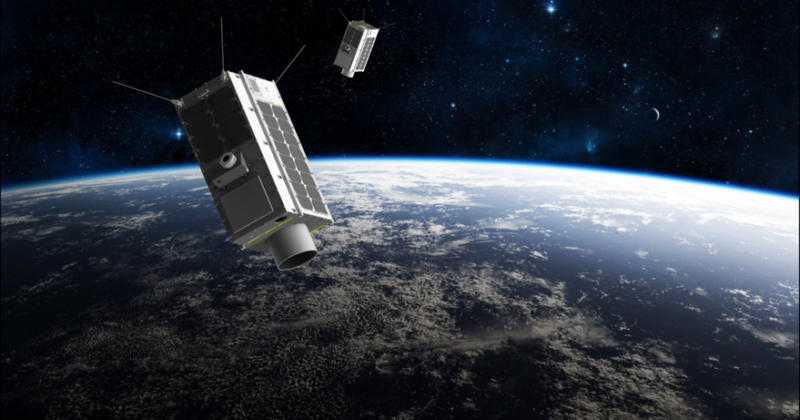Latest News

Artistic rendering of 2 GHGSats. Photo: GHGSat
GHGSat, a private company which owns and operates a satellite for monitoring Greenhouse Gas (GHG) emissions from industrial sources, revealed that its second satellite will be known as Iris. The naming follows a company tradition to name its satellites after its team’s children as a symbol of the importance of its mission to future generations. Iris is scheduled to be launched in August of this year and will carry an instrument which incorporates almost three years of lessons learned from flying GHGSat’s demonstration satellite Claire (GHGSat-D). Iris is expected to build on Claire’s success by making it possible to monitor even more sites, more frequently, at a fraction of the cost of other technologies.
GHGSat’s second satellite Iris is one of two new satellites that the Canadian company plans to bring to market in the next 18 months as it ramps up towards a full constellation. GHGSat’s third satellite, GHGSat-C2, is already in development and scheduled for launch in 2020. GHGSat is also preparing to fly its first aircraft sensor in the summer of 2019 to provide even higher resolution data as a complement to satellite data for certain customers.
“The truly innovative payload technology onboard Iris will grow GHGSat’s multi-year lead ahead of any competition and take GHGSat a large step closer to achieving its goal of being the global standard for emissions monitoring,” said GHGSat CEO Stéphane Germain. “The data Iris collects will not only help industrial operators address their emissions more effectively but also improve compliance reporting to regulators and provide unique competitive intelligence. We enable industrial operators to better measure, control and ultimately reduce emissions of GHGs.”
Get the latest Via Satellite news!
Subscribe Now